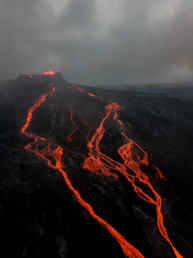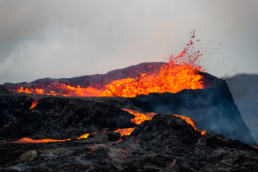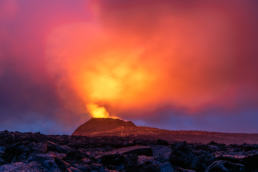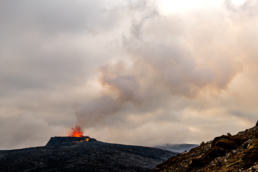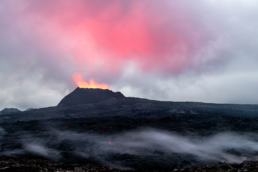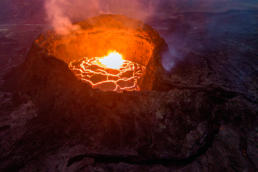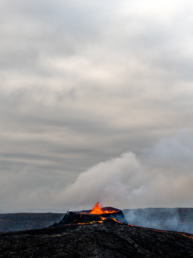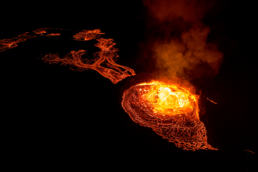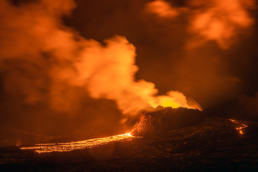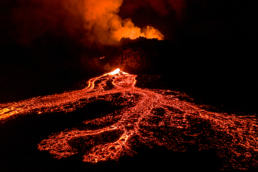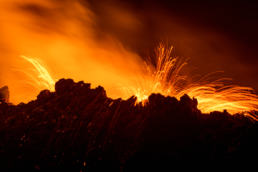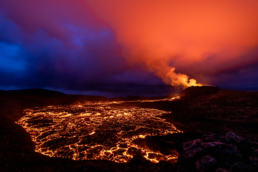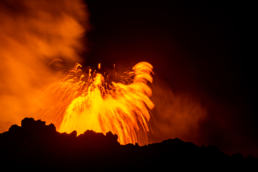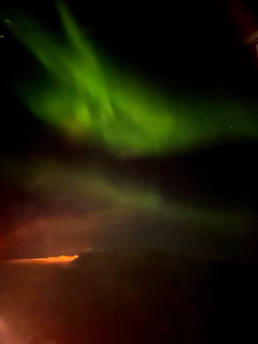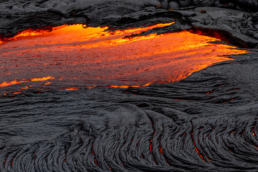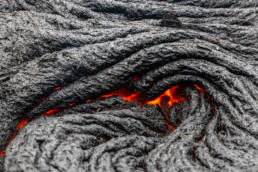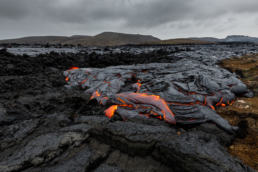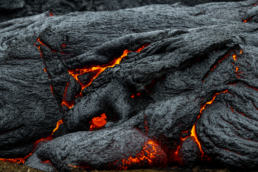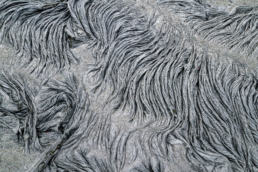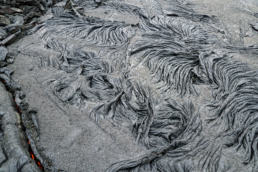Fagradalsfjall is a volcano formed in the Last Glacial Period on the Reykjanes Peninsula, around 40 kilometres from Reykjavík, Iceland. No volcanic eruption had occurred for 800 years on the Reykjanes Peninsula until 19 March 2021 when a fissure vent appeared. The eruption is effusive and still emitting fresh lava as of 31 August 2021. The eruption is unique among the volcanoes monitored in Iceland so far and is expected to develop into a shield volcano, possibly lasting several years.
The eruption has been going through rhythmically alternating phases of very low to very high levels. Roughly every 24 hours, it changes from one to the other extreme. When it is high, the crater is filled with a lava lake that overflows on its rims and produces spectacular flows; when it is low, there is usually no visible activity at the surface.
These lava pulses are likely caused by large gas bubbles rising through the magma in the underground feeding system, pushing the magma out of the vent onto the surface. Since these lava surges come at very regular intervals, these large gas bubbles must rise in very orderly pattern. Nature likes such regular processes and creates order – think of the rhythmic behavior of geysers, for example.
Fagradalsfjall volcano is reachable by car from Reykjavík after a 50 minutes drive on paved road, or under 30 minutes from the international airport of Keflavik. From the parking area it is about half an hour easy hike to reach the front of the lava field, while to see the volcano and to have more chances to see fresh lava, you should hike for another hour with short but intense ascends. Paths are from very well traced to virtually non existing, and it is easy to get lost when hiking at night or in the heavy fog. Weather conditions can change suddenly, and a sunny day can turn in very cold, windy and pouring rain: dress accordingly and be prepared for the worst.
The lava flow is steady but slow, so it is extremely hard to be surprised and run over by a stream. Also, the volcano doesn’t eject blocks nor pyroclastic debris. The main component of Fagradalsfjall volcanic gas emissions is water vapour, followed by carbon dioxide (CO2), and sulphur dioxide (SO2): only twice gas pollution at the eruption site exceeded danger levels; still, it is safer to watch the eruption with the wind direction behind you, rather than towards you, as the eruptive plume follows the wind direction.
To know when the next eruption begins, keep an eye to the tremor amplitude: eruptions happen during the high peaks of the curve and last around 6 to 10 hours.

